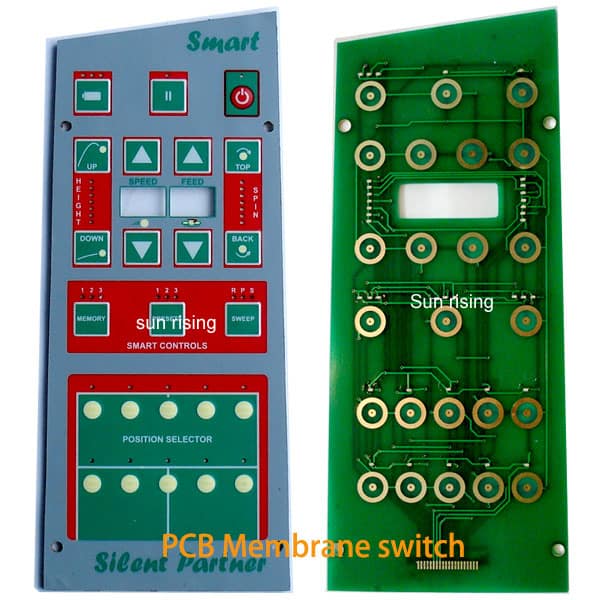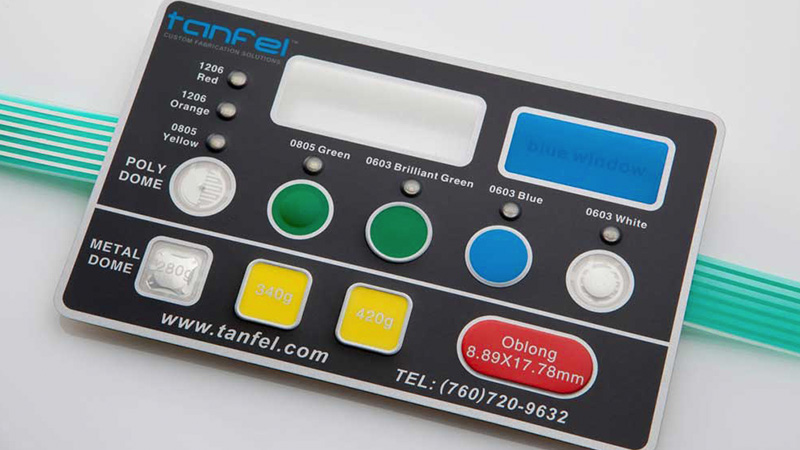Why Membrane Layer Changes Are Vital for Durable Control Systems
Membrane layer switches play a critical function in ensuring the sturdiness and reliability of control systems across numerous sectors. As we discover the multifaceted advantages of membrane switches, it ends up being apparent that their value goes beyond plain functionality, affecting user experience and operational performance.
Review of Membrane Layer Switches
Membrane layer switches are versatile and reputable components frequently utilized in various electronic control systems. The graphic overlay offers both practical and aesthetic layout, while the spacer layer makes certain that the switches are activated only when pressed.
Membrane buttons are often favored in applications requiring a compact and light-weight layout, making them optimal for portable devices, clinical equipment, and industrial equipment. They can be tailored to fulfill details individual needs and can include various attributes such as backlighting, tactile comments, and multiple shades. Membrane layer buttons are immune to dust, wetness, and contaminants, making them appropriate for environments where longevity is crucial.
Advantages of Durability
In several applications, the durability of membrane layer changes offers significant benefits that improve their overall performance and integrity. These switches are designed to withstand rough settings, making them perfect for use in requiring conditions such as high moisture, extreme temperatures, and direct exposure to chemicals. Their durable building assists to stop damage from physical influence, making sure lasting capability and reducing the demand for frequent replacements.
Additionally, membrane layer buttons are immune to deterioration, which is vital in applications where frequent communication happens. This longevity translates to decrease upkeep prices, as companies profit from lowered downtime and fewer service disruptions. Moreover, the encapsulated layout of membrane changes secures internal components from dirt and dampness access, more adding to their life expectancy.
Another advantage is their ability to preserve constant performance with time. With a high resistance for mechanical tension, these switches maintain their tactile feedback and electric integrity, making certain customer satisfaction. Eventually, the toughness of membrane switches not just improves functional performance but also cultivates confidence in their reliability, making them a preferred choice for control systems across various fields.
Applications in Numerous Industries
Long lasting control systems using membrane layer switches find considerable applications across a series of markets, each benefiting from the special attributes these buttons provide. In the clinical industry, membrane buttons are crucial for devices such as patient screens and diagnostic devices, where reliability and ease of cleansing are critical. Their resistance to wetness and impurities read guarantees they maintain capability in clean and sterile atmospheres.
The auto industry leverages membrane layer buttons a knockout post for dashboard controls and infotainment systems, where they provide smooth, low-profile interfaces that enhance individual experience. These switches are also created to endure harsh problems, including exposure to severe temperatures and vibrations.
In industrial settings, membrane buttons are typically utilized in machinery control panels, offering responsive feedback and longevity required for high-usage applications. Their capability to resist chemicals makes them appropriate for producing environments where spills and pollutants are frequent.

Consumer electronics, such as kitchen area appliances and push-button controls, also use membrane switches for their versatility and cost-effectiveness. In general, the versatility and durable nature of membrane layer switches over make them important throughout different fields, guaranteeing effective procedure and long life in control systems.
Design and Aesthetic Allure
While capability is critical, the style and visual charm of control systems furnished with membrane layer buttons play an essential duty in customer interaction and total experience (membrane switch). The visual layout of these switches can substantially influence user understanding and communication. A well-designed membrane layer switch enhances the good looks of the gadget, making it a lot more enticing to users and promoting a link between the user and the item
Membrane layer changes use a good deal of versatility in design, permitting makers to personalize graphics, shades, and structures to align with brand identity and product appearances. Using lively colors and distinct patterns can attract attention, while tactile responses can enhance the user's communication with the device. Additionally, the ability to incorporate LED signs and backlighting right into the membrane button style supplies both functional and aesthetic benefits, boosting exposure and usability in numerous settings.

Enhancing Individual Experience

Furthermore, membrane layer switches can be tailored to include graphical interfaces, improving usability by providing info in a clear and intuitive manner (membrane switch). This customization can consist of icons, tags, and shade coding that guide individuals via complicated functionalities easily. Additionally, their flexibility enables for assimilation in different environments, making sure regular performance whether in commercial machinery or consumer electronic devices
The resilience of membrane layer buttons also plays a critical role in individual experience. By holding up against severe problems and extended use, these buttons reduce the chance of system failures, hence advertising reliability and individual confidence. Ultimately, the critical use membrane changes not just elevates performance but also dramatically enriches user interaction with control systems, making them an important part in modern-day style.
Conclusion
